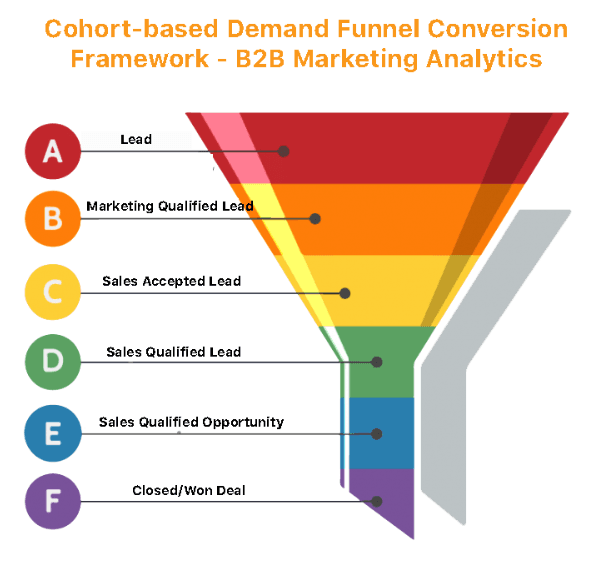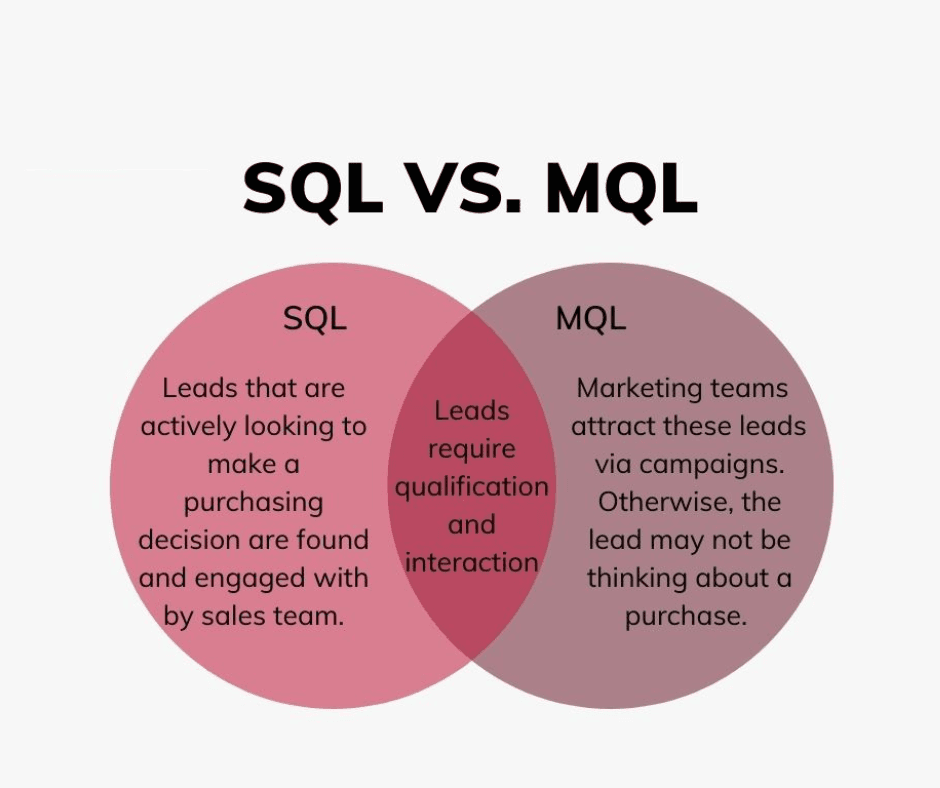Did you know that 61% of B2B marketers struggle to generate high-quality leads? Also, 67% of sales are lost because reps can’t qualify leads before moving them down the sales funnel.
But why?
An important step in sales is to figure out whether or not, a lead is worth converting and where they stand in the customer journey. To avoid common challenges, you must be actively involved in qualifying leads.
That’s why we have a lead qualification checklist for you. It provides a step-by-step process for qualifying sales leads.
Before moving on to the lead qualification process and what it takes to create a good checklist, let’s understand what lead qualification is all about.
What is Lead Qualification?
Lead Qualification is the process of finding out if a potential customer is a good match for what you offer. It’s about figuring out how likely they are to become a customer, especially for the long term. This applies in different sales situations, from selling products to reaching out to bloggers.
To do this well, you need to gather a lot of information about the potential customers. This helps you find the most promising ones, so you can focus your efforts smartly. When you prioritize those strong leads, your chances of turning them into customers go up.
Here’s how it works:
- Collect Leads from email sign-ups, social media, or other such sources.
- Check if the lead matches the ideal customer profile you’ve got.
- Decide the Next Steps based on the fit. You can either customize a proposal or move on to finding a new lead.
It’s a smart way to make sure you’re putting your energy where it is required and getting better results.
Three types of Qualified Leads:

Marketing Qualified Leads (MQL)-
Marketing-qualified leads (MQLs) are like potential customers showing a keen interest in your product or service. They’ve interacted with your company through emails, live chat, or opened automated email campaigns. Marketing Lead qualification aligns with your target audience and already feels a connection with your brand. They want more information, so it’s crucial to keep them engaged with fresh updates and special offers. Think of them as individuals ready to explore further in your sales journey, understanding how your offerings align with their goals.
Sales Accepted Lead (SAL)-
SAL, or Sales Accepted Lead, is an MQL that is boosted and qualified by the marketing team before being proceeded for additional evaluation in the sales funnel.
Sales Qualified Lead (SQL)-
Once a lead passes the initial stages, it transforms into an SQL (Sales Qualified Lead), indicating it’s ready for potential customer status. Alignment between marketing and sales teams is vital for a smooth sales funnel. However, disagreements over leads can arise, and that’s where SAL (Sales Accepted Lead) steps in to bridge the gap. While some organizations may skip SAL, it’s crucial for B2B setups, playing a key role in the demand creation process. Now, let’s delve into understanding how to qualify leads effectively.
The Analogy between MQL and SQL:

The main difference between a Marketing Qualified Lead and a Sales Qualified Lead lies in their tendency to make a purchase.
Imagine you’re shopping at a local mall. An MQL is like a shopper browsing or window shopping, showing general interest but only a chance of making a purchase.
On the other hand, an SQL is like someone walking directly to a specific aisle or seeking assistance, indicating a high interest in making a purchase. SQLs request quotes, seek purchase information, or schedule live demo sessions.
Understanding this difference helps teams align efforts, prioritize leads, and focus on prospects most likely to convert into customers.
If you are looking to get your market-qualified leads into sales-qualified leads, then it is best to use a CRM tool that is moreover an all-in-one solution for investigating, outreach, and closing. One such CRM software is Salesforce.
Salesforce lead qualification will assist in letting your sales team focus on qualified leads without any guesswork. However, it is best to get in touch with a professional Salesforce consulting company to realize the full potential of your lead qualification process.
How to Create Your Lead Qualification Checklist?
The lead qualification checklist focuses on each visitor and guides your outreach for new leads. Segregate your audience effectively within the sales funnel by applying a strategy that keeps key points in focus. This checklist helps in evaluating leads and assigning them to the appropriate category for further communication.
Understand Their Profile-
Get to know who your potential customers are and if they match your typical buyer. Once you grasp your target audience, categorize leads into different customer groups.
Assess Needs to Solutions-
Keep track of the activities of leads with the help of a Customer Relationship Management system (CRM). and if your offerings align with their business priorities. Make sure that you have something they find beneficial for their organization and genuinely want to use.
Inquire About Their Decision-Making Process-
Find out who else is involved in the purchase decision and how you can sway the relevant stakeholders. This helps you determine the best approaches to gain approval from all key parties.
Evaluate Your Position Compared to Competitors-
Understanding your market position and competition is crucial. Inquire about what your lead knows about your company and competitors. Identify what they appreciate about your services and what they prefer from the competition. Use this strategy to craft messages that highlight the uniqueness of your products and services.
Step By Step Process to Create a Lead Qualification Checklist:
Understand Your Customers Database-
Dive into customer details and actions to understand how they go from just looking to making a purchase. Now, for B2B, figure out which job roles turn into customers the most, look at what they do online, find out the average money they spend, and get a handle on the challenges they face. Work together with your sales and marketing teams to find common traits among customers, creating a strong base.
Choose Your Qualification Framework-
Pick a lead qualification framework that fits your goals. These frameworks give you a guide on what to focus on when doing your research. There are different options, so go for what works best for your business.
Identify Intent-
Finding out early if someone is ready to buy is super important. Add this to your checklist by figuring out what actions from a prospect show they’re ready to make a move. Look at what the journey is like for someone who becomes a customer for clarity.
Integrate with Lead Scoring-
Adapt your checklist seamlessly with a lead scoring model to make the qualification process automatic. Lead scoring gives points based on actions or qualities that suggest someone might be ready to buy. This system filters prospects into categories like Marketing Qualified Leads (MQL) or Sales Qualified Leads (SQL).
Refine and Optimize-
Always keep tweaking. Go back to your lead qualification checklist every so often to make sure it still works well with what your customers need and what the market is looking for. Regular adjustments keep your lead qualification system working well and make sure you’re getting a steady flow of quality leads.
This is often known as the sales lead qualification process, leading to sales-qualified leads.
Salesforce – a custom CRM for software development provides effective tools for handling, assessing, and directing leads. A B2B marketing automation solution can also assess and score leads before transferring them to your Salesforce CRM system. Salesforce lead qualification removes the uncertainty from the process, allowing your teams to concentrate on qualified leads.
Five Tips to Guide Leads Through the Sales Funnel:
Knowing how to qualify leads is only the beginning; a strategic approach is crucial to navigating leads through the sales funnel effectively. Here are five practical tips to ensure a smooth progression:
Revamp Your IQL Strategy-
At the very start, make sure to connect with your audience where they spend time. It could be on social media, through partners, or using traditional ads. A strong IQL strategy is all about getting your brand out there. Remember, people often visit websites or make purchases after seeing something multiple times.
Utilize Lead Magnets-
When people are looking into things, catch their interest by offering lead magnets—free stuff in exchange for their contact info. This could be things like webinars, ebooks, tutorials, or checklists. This helps build a good feeling about your brand, making leads more open to your future messages.
Pre-screen Your Prospects-
Before you put in a lot of effort, figure out who you’re trying to reach. Prequalify leads to know if they’re more of a Marketing Qualified Lead (MQL) or a Sales Qualified Lead (SQL). Tailor your info to these qualified leads to guide them closer to making a purchase.
Analyze Drop-off Points-
Find out where leads are leaving the process. Knowing why they’re dropping off helps you stop losses and create targeted marketing. Figure out where the process isn’t working and fix it.
Enhance Your Approach-
Keep going back to your buyer personas, analytics, and marketing stuff. Always work on making lead qualification, engagement plans, and sales techniques better. Doing this over and over makes sure you can change things up and improve your whole approach.
Guiding leads through the sales process needs a strategy that’s always changing. Using these tips won’t just make things smoother, it’ll also boost how many people become customers and how much they stay engaged.
Salesforce functionality in lead generation-
Salesforce makes it easy to generate leads from sources like emails and website inquiries. Sales reps can manually create leads, or they can use apps from the Salesforce AppExchange to streamline the process. This saves time by combining company and contact data in one place after calls or emails.
Salesforce’s lead conversion feature is handy. With one click, users can create multiple connected records, including accounts, contacts, opportunities, and contact roles. This not only boosts efficiency but also prevents duplicate entries. The function ensures existing customers are not duplicated, saving time for salespeople.
It’s important to work with leads because not all inquiries turn into immediate opportunities. For example, a prospect might inquire about a product not currently offered. Salesforce development services enhance this lead qualification process, optimizing the handling of prospects and ensuring a more effective sales strategy.
Final Words:
In the field of marketing, continuous improvement is key, and lead generation is no exception. Active engagement in lead qualification empowers your Marketing team to redefine its collaboration with Sales, influencing positive outcomes. The MQL quality gate establishes a measurable lead quality standard, reinforcing the sales team’s confidence in marketing qualified leads. This cultivates unified discussions around leads, ensuring a shared understanding of quality.
To seamlessly integrate this process, consider using Salesforce, a powerful tool that aids in the entire lead conversion journey. For expert assistance, hire a Salesforce app development company like DianApps to help you with the lead qualification checklist.










Leave a Comment
Your email address will not be published. Required fields are marked *